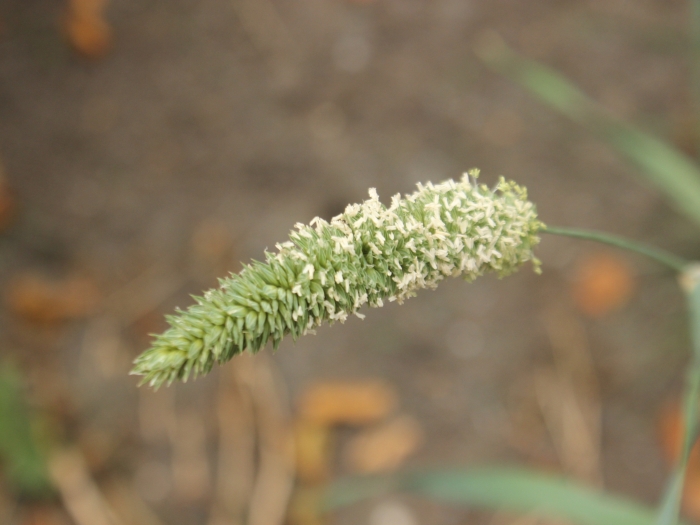Little Seed Canary Grass
(Phalaris minor)
Little Seed Canary Grass (Phalaris minor)
/
/

Joe Dillon
CC BY 4.0
Image By:
Joe Dillon
Recorded By:
Copyright:
CC BY 4.0
Copyright Notice:
Photo by: Joe Dillon | License Type: CC BY 4.0 | License URL: http://creativecommons.org/licenses/by/4.0/ | Rights Holder: Joe Dillon | Publisher: iNaturalist | Date Created: 2024-03-31T12:20:10-07:00 |
























Estimated Native Range
Summary
Phalaris minor, commonly known as Little Seed Canary Grass, is an annual bunchgrass native to the Mediterranean region, including North Africa, Europe, and extending to South Asia. It typically grows up to 5.9 feet tall and features a spike-like panicle that is characteristic of the species. This grass is often found in disturbed sites, field margins, and along roadsides within its native range.
Little Seed Canary Grass is known for its rapid growth and ability to colonize disturbed soils, which can be useful for erosion control or as a temporary cover crop. However, its invasive potential should be carefully considered before cultivation. It thrives in full sun and can adapt to a variety of soil conditions, but prefers moist, fertile soils. In areas where it is not invasive, it may be used for forage or as an ornamental grass in garden settings for its upright form and texture. Gardeners should be aware that Phalaris minor can become a problem if not managed properly, as it has the potential to spread aggressively and outcompete native vegetation.CC BY-SA 4.0
Little Seed Canary Grass is known for its rapid growth and ability to colonize disturbed soils, which can be useful for erosion control or as a temporary cover crop. However, its invasive potential should be carefully considered before cultivation. It thrives in full sun and can adapt to a variety of soil conditions, but prefers moist, fertile soils. In areas where it is not invasive, it may be used for forage or as an ornamental grass in garden settings for its upright form and texture. Gardeners should be aware that Phalaris minor can become a problem if not managed properly, as it has the potential to spread aggressively and outcompete native vegetation.CC BY-SA 4.0
Plant Description
- Plant Type: Grass
- Height: 1-2 feet
- Width: 1-3 feet
- Growth Rate: Rapid
- Flower Color: N/A
- Flowering Season: Spring, Winter
- Leaf Retention:
Growth Requirements
- Sun: Full Sun
- Water: Medium
- Drainage: Medium, Slow
Common Uses
Erosion Control, Low Maintenance
Natural Habitat
Mediterranean region, including North Africa, Europe, and extending to South Asia
Other Names
Common Names: Littleseed Canarygrass, Small Canarygrass, Alfarino, Annual Canary Grass, Bristle-Spike Canary Grass, Canarygrass, Pasto-Romano
Scientific Names: , Phalaris minor, Alopecurus otiporensis, Phalaris ambigua, Phalaris aquatica, Phalaris aquatica subsp. minor, Phalaris aquatica var. minor, Phalaris arundinacea var. minor, Phalaris brevis, Phalaris capensis
GBIF Accepted Name: